Today’s Current Affairs: 15th November 2025 for UPSC IAS exams, State PSC exams, SSC CGL, State SSC, RRB, Railways, Banking Exam & IBPS, etc
Table of Contents
Sickle Cell Disease:
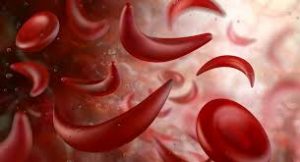
A decade-long study by a Gurugram hospital has found success in curing Sickle Cell Disease among children through bone marrow (stem cell) transplantation, placing India among the leading nations in advanced paediatric transplant outcomes.
- It is a group of inherited blood cell disorders that affect hemoglobin, the protein that carries oxygen through the body.
- SCD can cause episodes of severe pain and lead to life-threatening complications.
- The most common and severe type of SCD is sickle cell anemia.
- Normally, RBCs are disc-shaped and flexible enough to move easily through the blood vessels.
- People with SCD have atypical hemoglobin molecules called hemoglobin S, which can distort RBCs into a sickle, or crescent shape.
- When RBCs sickle, they do not bend or move easily and can block blood flow to the rest of the body.
- SCD interferes with the delivery of oxygen to the tissues.
- The cause of SCD is a defective gene, called a sickle cell gene.
- A person will be born with SCD only if two genes are inherited—one from the mother and one from the father.
- Symptoms:
- Early stage: Extreme tiredness or fussiness from anemia, painfully swollen hands and feet, and jaundice.
- Later stage: Severe pain, anemia, organ damage, and infections.
- Treatments:
- A bone marrow transplant (stem cell transplant) can cure SCD.
- However, there are treatments that can help relieve symptoms, lessen complications, and prolong life.
- Gene therapy is also being explored as another potential cure.
- The UK recently became the first country to approve gene therapy treatment for SCD.
Katarniaghat Wildlife Sanctuary:

A 55-year-old farmer was mauled to death by a leopard in a field adjoining a forest area under the Kakraha Range of the Katarniaghat Wildlife Sanctuary recently.
- Katarniaghat Wildlife Sanctuary is situated in the Upper Gangetic plain, falling in the Terai of the Bahraich district of Uttar Pradesh.
- In 1987, it was brought under the purview of the ‘Project Tiger’, and together with the Kishanpur Wildlife Sanctuary and the Dudhwa National Park, it forms the Dudhwa Tiger Reserve.
- The total area of the sanctuary is 400.09 sq.km.
- Sharing an international border with Nepal, this sanctuary was established to protect its Gharial (Gavialis gangeticus) population.
- It provides strategic connectivity between the tiger habitats of Dudhwa and Kishanpur in India and the Bardia National Park in Nepal.
- Katarniyaghat’s vegetation consists of grasslands, mixed deciduous forests, and moist deciduous forests with sal trees.
- It is predominantly Sal Forest with its associate tree species like Terminalia alata (Asna), Lagerstroemia parviflora (Asidha), Adina cordifonia (Haldu), Mitragyna parpiflora (Faldu), Gamelina arborea (Gahmhar), etc.
- It is home to a number of endangered species, including the gharial, tiger, rhino, Gangetic dolphin, Swamp deer, Hispid hare, Bengal florican, the White-backed and Long-billed vultures.
- The Gairwa River, which flows in the KWS area, is declared a sanctuary for Mugger and Gharial. It is also home to rare turtles, freshwater fish, and a host of aquatic life.
- It is among the few places in India where freshwater dolphins, also known as Gangetic dolphins, are found in their natural habitat.
Palar River:

A 60-year-old woman was washed away in a flash flood in the Palar river near Katpadi town in Vellore, Tamil Nadu, recently.
- Palar River is a river in southern India.
- It originates from the Nandidurg hills in the Kolar district of Karnataka, flowing as an underground stream (Guptagamini) before emerging near Bethamangala town.
- It flows 93 km in Karnataka, 33 km in Andhra Pradesh, and 222 km in Tamil Nadu before finally reaching its confluence in the Bay of Bengal at Vayalur, about 100 km south of Chennai.
- The total area of the Palar River Basin is 17,633.19 sq.km.
- The river has seven tributaries, with the Cheyyar River and Ponnai River being the most significant.
- The cities of Ramanaickenpet, Vaniyambadi, Ambur, Vellore, Melvisharam, Arcot, Walajapet (Anaicut), Kanchipuram, and Chingleput are located on the banks of Palar River.\
- Many ancient temples, such as the Kolaramma Temple and Someswara Temple in Kolar and the Kanchipuram temples, are situated along its banks, making the river sacred and culturally significant.
- The Arcot Dam, built on the river in Tamil Nadu, is historically significant and is one of the oldest irrigation dams in the region.
Strait of Hormuz: In News
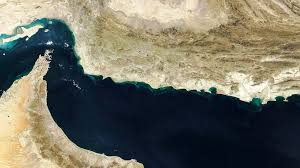
Iran seized a Marshall Islands-flagged oil tanker as it travelled through the narrow Strait of Hormuz recently, turning the ship into Iranian territorial waters in the first such interdiction in months in the strategic waterway.
- It is a narrow waterway between Iran and the Arabian Peninsula, specifically the United Arab Emirates, and Musandam (Oman).
- The Gulf of Oman is on the strait’s east, while the Persian Gulf is on the west.
- It is the only sea channel linking the oil-rich Persian Gulf (west) with the Gulf of Oman and the Arabian Sea (southeast).
- Iran is located on the north coast, while the UAE is on the south coast.
- The strait is 167 kilometers long.
- At its narrowest point, the Strait of Hormuz is only 29 nautical miles wide (54 km).
- The strait consists of 2-mile-wide navigable channels (3 km) for inbound and outbound shipping as well as a 2-mile-wide buffer zone.
- Some of the islands located in the Strait of Hormuz are Hengam, Hormuz, and Qishm.
- The Strait of Hormuz is considered one of the world’s most economically important choke points.
- About 30% of the world’s liquefied gas and 25% of oil pass through the Strait of Hormuz.
Hepatitis A:
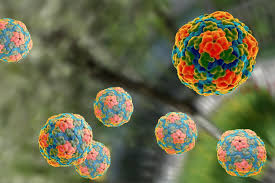
Public health experts opined that Hepatitis A deserves a place in India’s universal immunisation programme due to its multiple outbreaks across many states in India.
- Hepatitis A is an inflammation of the liver caused by the hepatitis A virus (HAV).
- It occurs throughout the world.
- It is especially common in countries in Latin America, Africa, the Middle East, Asia, the Caribbean, and the Western Pacific.
- Unlike hepatitis B and C, hepatitis A does not cause chronic liver disease but it can cause mild to severe symptoms and rarely fulminant hepatitis (acute liver failure).
- It is transmitted primarily by the faecal-oral route; that is when an uninfected person ingests food or water that has been contaminated with the faeces of an infected person.
- The virus can also be transmitted through close physical contact with an infectious person.
- It includes fever, malaise, loss of appetite, Nausea, diarrhoea, abdominal discomfort, Dark urine and jaundice.
- There is no specific antiviral treatment for hepatitis A.
- Its treatment mainly focuses on supportive care to relieve symptoms and ensure adequate hydration and nutrition.
Ambaji Marble:
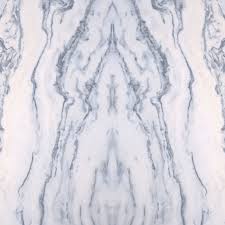
The Ambaji Marble has been awarded the Geographical Indication (GI) tag for its high-quality white stone.
- Ambaji Marble is named after the town of Ambaji in the state of Gujarat, where it is predominantly quarried.
- It is a type of marble known for its milky white colour, durability and natural beauty.
- Ambaji Marble is characterized by its pristine white color, which often features subtle gray or beige veining.
- The veins can vary in intensity and they occur naturally due to the presence of minerals and impurities during the marble formation process.
- It has very long-lasting shine and durability.
- It has been used in the construction of Ambaji temple and many other religious places, memorials and grand buildings.
RuTAG Initiative:
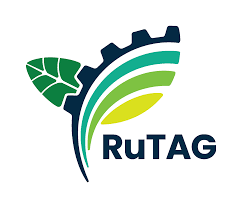
The Principal Scientific Adviser (PSA) to the Government of India chaired the second annual review meeting of the Rural Technology Action Group (RuTAG) 2.0 initiative.
- The Rural Technology Action Group (RuTAG) is an initiative of the Office of the Principal Scientific Adviser (OPSA) which was launched in 2004.
- It was conceptualized as a mechanism to provide a higher level of Science &Technology intervention and support for rural areas.
- Under this initiative, the interventions are designed to be primarily demand-driven, focusing on bridging technology gaps at the grassroots level, upgrading technology, and providing training and demonstrations through innovative projects.
- Objectives of RuTAG Initiative:
- Collaborating with stakeholders Non-Government Organizations, Self Help Groups, Community Organizations, and Start-ups to identify sector-specific technology needs.
- Developing technologies based on socio-economic data coherent with national/regional priorities.
Prototype Validation: ValidatIng developed prototypes and explore commercialization with scalability aspects. - Commercializing the potentially validated technologies for national/global markets.
- RuTAG 2.0 was launched by the Office of the PSA in April 2023.
- With a focus on commercialization and broader dissemination of developed technologies as products, ensuring wider accessibility and socio-economic impact.
- It will emphasize translating innovation into market-ready products reflecting its commitment to driving transformative changes in rural areas and empowering communities for sustainable development.
Man-Portable Autonomous Underwater Vehicles:
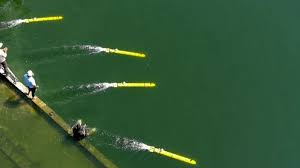
New generations of man-portable autonomous underwater vehicles (MP-AUVs) have been successfully developed by the Defence Research and Development Organisation.
- It is developed for mine countermeasure missions.
- It is developed by the Naval Science & Technological Laboratory (NSTL), Visakhapatnam of Defence Research and Development Organisation (DRDO).
- It offers rapid response capability with reduced operational risk and logistic footprint for naval mine warfare applications.
- It has deep learning based target recognition algorithms enabling autonomous classification.
- It comprises multiple AUVs equipped with Side Scan Sonar and Under Water cameras as primary payloads for real-time detection & classification of Mine-Like Objects.
- It has a robust underwater acoustic communication network which allows seamless data exchange between AUVs during missions and providing greater situational awareness.
Digital Personal Data Protection (DPDP) Rules, 2025:

The Government of India has officially notified the Digital Personal Data Protection (DPDP) Rules, 2025, operationalising the DPDP Act, 2023
- A set of detailed regulatory rules that implement the Digital Personal Data Protection Act, 2023, laying out operational procedures for personal data processing, consent, safeguards, compliance timelines and oversight mechanisms.
- Enforced through: the Data Protection Board of India, a fully digital adjudicatory body.
- Aim:
- To protect digital personal data while enabling innovation, ease of compliance and economic growth.
- To define obligations of Data Fiduciaries and rights of Data Principals with transparency and accountability.
- To ensure secure, consent-based, purpose-limited and responsible use of personal data.
Janjatiya Gaurav Divas : 15th November
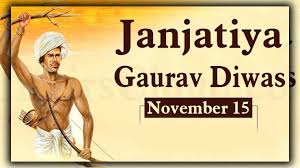
India observes Janjatiya Gaurav Divas on 15th November to honor tribal freedom fighter Birsa Munda, with 2024–25 marked as Janjatiya Gaurav Varsh for his 150th birth anniversary.
- Janjatiya Gaurav Diwas day is observed each year to honor tribals’ contributions in preserving cultural heritage and fostering Indian values such as national pride, valour, and hospitality. It was first celebrated in 2021 as part of Azadi Ka Amrit Mahotsav.
- Birsa Munda led the Ulgulan (Great Tumult) against British land policies, symbolizing tribal resistance and the demand for self-rule.
- Other tribal leaders like Veer Narayan Singh, Badal Bhoi, Raja Shankar Shah, and Kunwar Raghunath Shah are also being commemorated for their anti-colonial efforts.
- Janjatiya Gaurav Varsh 2025 ,As part of the celebrations, the government is establishing 11 Tribal Freedom Fighters Museums to highlight tribal valour and anti-colonial struggles often overlooked in mainstream history.
Birsa Munda:
- Born on 15th November 1875 in the Chota Nagpur Plateau, he belonged to the Munda tribe.
- He grew up witnessing land alienation, forced labour (begar), and the decline of the Khuntkatti land system (joint ownership of land by tribal lineage) under British rule.
- He founded the Birsait faith, gaining Munda and Oraon followers who revered him as “Bhagwan” and “Dharti ka Abba.”
- 2025 : 150th Birth Anniversary of Birsa Munda
Operation Southern Spear:

The United States has launched Operation Southern Spear, a major new military and surveillance campaign targeting Latin American drug-trafficking cartels.
- A large-scale U.S. military and intelligence operation deploying unmanned air and sea systems to detect, monitor, and disrupt drug-trafficking networks across the Caribbean and eastern Pacific.
- Nation Involved: Led by the United States, under the Department of Defence.
- Aim:
- To neutralize narco-terrorist networks operating in the Western Hemisphere.
- To secure U.S. borders against drug smuggling routes.
- To test and operationalize a hybrid fleet of robotic and manned naval forces as part of Navy modernization.
- Key Features of Operation Southern Spear:
- Robotic & Autonomous Systems (RAS): Long-endurance robotic surface vessels, interceptor boats, and VTOL robotic aircraft for round-the-clock surveillance.
- Hybrid Fleet Integration: Combines unmanned systems with traditional warships under the U.S. Navy’s Project 33 for accelerated robotic fleet deployment.
- Expanded Naval Presence: Over a dozen U.S. vessels in the region, including USS Gerald R. Ford, amphibious ships, and a nuclear submarine.
- High-Speed Interdiction: Robotic boats capable of rapid interception of narco-vessels in high-traffic maritime chokepoints.
India Targets 55% Female Workforce Participation by 2030:
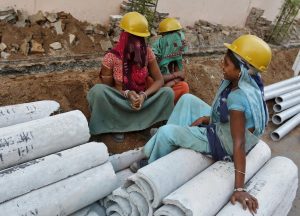
The Ministry of Labour and Employment has announced a strategic plan to raise India’s Female Labour Force Participation Rate (FLFPR) from 41.7% (FY24) to 55% by 2030. The target is aimed towards Bridging the Gender Employment Gap.
- Women entering the workforce boost overall productivity, enhance innovation, and strengthen financial stability, making India more resilient and competitive globally.
- As per McKinsey report pushing gender equality can deliver a sizable additional economic growth and could add Rs 46 lakh crore (USD 700 billion) to India’s GDP in 2025.
- Women bring varied perspectives that deepen the labour pool, stimulate fresh ideas, and help industries adapt to changing economic trends.
Sectors such as healthcare, education, financial services, and STEM stand to gain significantly from a balanced gender workforce. - Workforce participation empowers women through financial independence, asset ownership, and bargaining power, which are critical for achieving SDG 5 (Gender Equality).
- Empirical studies show that women tend to invest a greater share of their income in education, nutrition, and healthcare for their families.
- This enhances human capital development and breaks intergenerational cycles of poverty.
- Expanding women’s role across sectors—from agriculture and MSMEs to AI and clean energy—promotes equitable and sustainable development.
- Women’s workforce integration is not just a rights-based issue but a strategic economic imperative, crucial for India’s transition to a USD 5 trillion economy and achievement of the Viksit Bharat 2047 vision.
National Migration Survey (2026–27):
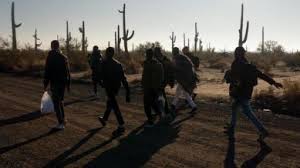
The Ministry of Statistics and Programme Implementation (MoSPI) will conduct a year-long National Migration Survey from July 2026 to June 2027, the most comprehensive study of migration in nearly two decades.
National Migration Survey (2026–27):
- The National Migration Survey, conducted under the National Sample Survey framework, will cover nearly all states and union territories except the inaccessible villages of the Andaman and Nicobar Islands.
- The survey aims to produce reliable estimates on key migration indicators, including the overall migration rate, out-migration levels, short-term migration patterns, the reasons people move, and the net migration balance across regions.
- India needs a new migration survey because the last NSS detailed migration survey (NSS 64th round in 2007–08) is outdated.
- With major changes in mobility, especially after Covid-19, fresh data is essential for planning housing, jobs, welfare portability, and regional development.
- Short-term migration will now cover stays of 15 days to six months, replacing the earlier one-to-six-month definition.
- The survey will track individual migrants instead of whole households, and it adds new questions on income changes, access to services, living conditions, and future migration plans to better understand the impact of mobility.
- Migration surveys have been conducted by the NSS since the 9th round (1955), with dedicated rounds such as the 18th (1963–64) and 64th (2007–08) collecting detailed information on various aspects of migration.
- More recent data on migration were collected through the Periodic Labour Force Survey (PLFS) 2020–21 and the Multiple Indicator Survey (2020–21).
Jal Sanchay Jan Bhagidari(JSJB) Initiative:
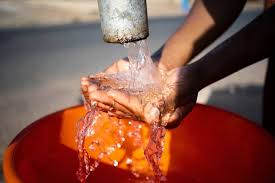
The Jal Shakti Ministry announced the 1st Jal Sanchay Jan Bhagidari (JSJB) Awards under the JSJB initiative, with Telangana topping the list for 5.2 lakh water conservation structures.
- This initiative aligns with the PM’s vision of Jan Shakti for Jal Shakti.
- Launched in September 2024 in Surat, JSJB is a community-driven program under Jal Shakti Abhiyan: Catch the Rain (JSA: CTR) and integrates the Whole-of-Government and Whole-of-Society approach.
- It promotes rooftop rainwater harvesting and reviving traditional water bodies like lakes, ponds, and stepwells
- It encourages the construction of artificial recharge and storage structures.
- It follows the 3Cs mantra – Community, corporate social responsibility (CSR), and Cost, ensuring long-term water security and resilience against water stress.
- States divided into five zones for implementation i.e., Northern, Eastern, Southern, Western and North- Eastern Zone & Hilly States.
- The Ministry of Jal Shakti serves as the nodal agency and has partnered with the Ministry of Housing and Urban Affairs to enhance urban water conservation efforts.
India Unveils First Indigenous High-Precision Diode Laser:
India launched its first indigenous high-precision diode laser engineered for quantum communication and computing. It marks a major step in India’s capability to build quantum-grade hardware.A compact, high-precision diode laser system engineered for quantum technologies, scientific research, higher-education laboratories, and cutting-edge industrial applications.It provides ultra-stable, tunable and long-duration laser output required for quantum experiments and secure communication systems.Developed by Prenishq Pvt. Ltd., a deep-tech startup and spin-off from IIT Delhi Supported by the National Quantum Mission (NQM). Aim is to create an indigenous quantum-grade diode laser for secure communication, quantum computing, and high-precision scientific research,to strengthen India’s quantum ecosystem and enable quantum-safe digital infrastructure.
Top Indian Lender Backs Next Phase of Banking Sector Mergers:
India’s banking sector is gearing up for another transformative phase as the State Bank of India (SBI) advocates for fresh consolidation among public sector banks (PSBs). With India aiming to become a $30 trillion economy by 2047, large and resilient banking institutions are seen as essential for funding the nation’s ambitious infrastructure and industrial development goals.
GI Tag Awarded to Traditional Lepcha Musical Instruments:
The Government of India has granted Geographical Indication (GI) tags to two traditional Lepcha musical instruments — Tungbuk and Pumtong Pulit. This official recognition places these folk instruments among the distinguished products that enjoy legal protection and cultural prestige under India’s GI registry. The GI tags were formally awarded on 5th November 2025, marking a proud moment for the Lepcha community of Sikkim, which has long been known for its deep-rooted traditions and musical heritage.
Bank Credit Growth Slows to 11.3% While Deposits Rise to 9.7% in October:
India’s banking sector witnessed a noticeable shift in financial flows during October 2025. According to the latest data from the Reserve Bank of India (RBI), credit growth slowed to 11.3% year-on-year, while deposit growth picked up pace to reach 9.7% for the same period. This changing dynamic is significant as it hints at possible shifts in loan demand, banking strategies, and liquidity management.The total bank credit outstanding stood at approximately ₹193.9 lakh crore as of October 31, 2025. This marks a slight moderation from previous months, reflecting a slower pace of credit expansion across sectors. A reduced appetite for loans, cautious lending by banks, and global economic headwinds may all be contributing factors.
VP C.P. Radhakrishnan Inaugurates 30th CII Partnership Summit in Visakhapatnam:
The 30th edition of the Confederation of Indian Industry (CII) Partnership Summit 2025 was inaugurated in Visakhapatnam, Andhra Pradesh, by the Vice‑President of India, C. P. Radhakrishnan, on 14 November 2025. Organised jointly by CII, the Department for Promotion of Industry and Internal Trade (DPIIT), Ministry of Commerce & Industry, and the Andhra Pradesh Government, the two‑day summit brings together industry leaders, policymakers and international delegates to chart the future of trade, investment and technology in India.The summit is being held under the theme “Technology, Trust and Trade: Navigating the New Geoeconomic Order”, reflecting the changing global economic dynamics and India’s increasing role in it.More than 2,500 delegates, including representatives from 77 countries, are expected to participate.
India Emerges as the World’s 6th‑Largest Patent Filer:
Union Minister of State for Science & Technology, Dr Jitendra Singh, announced that India has emerged as the world’s 6th‑largest patent filer, with over 64,000 patents filed, of which more than 55 per cent are by resident Indian innovators. He made this declaration while speaking at an annual tech‑fest in New Delhi, also pointing out India’s rise in the Global Innovation Index (GII) from 81st to 38th over recent years.




